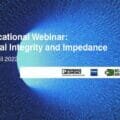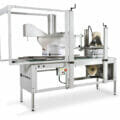The range and complexity of electrical and electronic equipment used in manufacturing environments has increased dramatically over the last few years. Here, John Mitchell, global business development manager of supply, repair and field service specialist CP Automation explains how to manage the increasing harmonic levels in the modern industrial landscape.
The introduction of variable speed drives, fluorescent lighting and transformers has brought a rise in the number of non-linear loads. One of the unwanted consequences of non-linear loads is the creation of harmonic currents, which can cause voltage distortion and quality problems.
To address the issues caused by high harmonics levels, including motor vibration, voltage notching, electromagnetic interference and overheating, companies can use harmonic filters.
Active or passive?
When choosing a harmonic filter, the first thing to consider is whether you need a passive or an active one. The traditional choice is a passive filter, used to minimise power quality problems in the network. These filters operate mainly on a fixed basis and are tuned to a harmonic order close to the order to be eliminated. One drawback of passive filters is that they are most efficient when the load is operating above 80 per cent and they cannot adapt the amount of compensation current they inject into the system.
On the other hand, active harmonic filters are the most flexible solution on the market. They monitor the network and inject the necessary amount of compensation current at any given time, which restores current waveform and lowers current consumption. This makes them ideal for installations in which current load changes constantly.
Regardless of what type of harmonic filter you decide to use, make sure it has the relevant UL certifications for the environment in which it is going to run. If unsure, you should always refer to an expert.
Another option is a mixed solution. You could use a passive filter on some applications and add a smaller active filter overall, which will help you save costs in the long run.
Excess heat?
Another thing to consider when choosing a harmonic filter is that harmonic currents can induce additional heating in generators. Harmonics can also lead to heating of busbars, cables and equipment, cause thermal damage to induction motors and generators and thermal tripping of safety devices, like fuses or sensors in breakers. These relatively minor issues can have a negative effect on the entire system and can increase maintenance costs.
Luckily, some active filters produce up to a third less heat than competitor products due to the switching techniques of the insulated-gate bipolar transistors (IGBTs). Equally, the REVCON RHF Series of passive filters offer up to 99.5 per cent efficiency.
When comparing filters, active or passive, you should look closely at the total cost of ownership for the end user. After all, heat loss is a direct cost in energy bills. This is particularly important on the shop floor, in marine and offshore applications or any other environments where space and heat is particularly precious.
Before choosing a harmonic filter, it is important to assess the entire system and size the right solution for your specific needs. It is not enough to look at one troublesome application individually. Instead, you should have an accurate representation at the entire operation as a whole. Often what looks like the cause of a problem can actually be an effect.
CP Automation suggests performing a plant survey and collecting data over several days. After the initial analysis, we can recommend the most appropriate product and install it without significant disruptions.
Once the harmonic filter has been live for a few weeks, another survey is necessary to check if all problems have been resolved. This ensures the product is appropriate and it gives companies real peace of mind.
Unfortunately, harmonics are not going anywhere, so businesses can’t afford to just ignore them. Instead, the best solution is to tackle the problem head on and if you are unsure of anything, always consult an expert.








